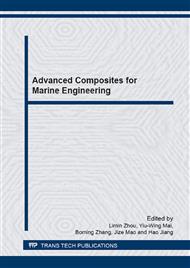p.19
p.28
p.35
p.43
p.54
p.63
p.72
p.78
p.85
Structural Dynamic Analysis of a Hypersonic Composite Wing
Abstract:
Aerodynamic heating will be caused when a hypersonic vehicle is in flight, so it should be taken into account when a structural dynamic analysis is carried out. A method for structural dynamic analysis under thermal environment is presented in this paper. Firstly, Computational Fluid Dynamic (CFD) method which is based on solving the three-dimensional compressible Navier-Stokes (N-S) equations is employed to perform aerodynamic heating analysis. Secondly, Finite Element Method (FEM) is used to assess structural heat conduction and get temperature field. Lastly, based on the quasi-linear structural model, a structural dynamic analysis is analyzed under thermal environment. A hypersonic composite wing is investigated as a numerical example. Compared with the case without considering aerodynamic heating, major modes and frequencies of the wing change a lot because of the decrease of the elastic modulus and the alteration of structural stiffness distribution. The results indicate that the aerodynamic heating has a high influence on the vibration characteristics. Therefore, aerodynamic heating should be considered in hypersonic structural dynamic analysis.
Info:
Periodical:
Pages:
54-62
Citation:
Online since:
March 2015
Authors:
Price:
Сopyright:
© 2015 Trans Tech Publications Ltd. All Rights Reserved
Share:
Citation:


